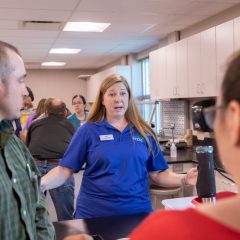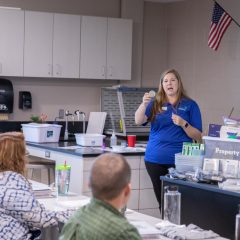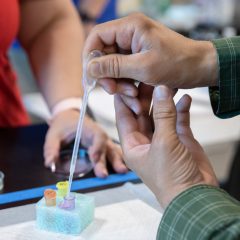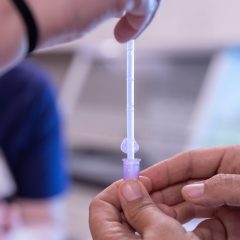Biotechnology
Feeding the World-DNA to the Rescue
Grade Level: High School
Since man first started raising crops, we have quested for stable varieties with high yield, no matter what the conditions may be. Our early ancestors developed many techniques such as cross breeding to develop some of our earliest crops. Humans have been seeking out plants that produced high yield fruit and grains, and nurturing specific varieties through selective breeding, until we developed the very crops we know today. Corn was once a small plant, which is today considered a weed, teosinte. Teosinte had very few grains on each fruiting body, and all grains had very hard outer seed cases that would protect the nutrition to be found inside. Through humans selecting varieties from the wild and cross breeding them by hand, we developed the many maize varieties we have built our civilization on. Today, we face an ever increasing challenge of producing more and more food for a growing human population. We must go back to our roots and continue to develop varieties, just as our ancestors before us, to meet this demand. Through the expanded biological understandings of genetics and new techniques of genetic modification we have to create varieties that increase yield, decrease herbicide and pesticide use, and ultimately grow more food. In this exercise students will learn more about the origins of plant varieties, and how we continue to develop new varieties by utilizing new technologies.
Teaching the Lesson
About Kansas Corn STEM
Investing in Kansas teachers and students is a priority for the Kansas Corn Commission. We are committed to providing materials and training to support STEM education while fostering an understanding of how corn farming and agriculture fit into our daily lives. Professional development workshops are offered to teachers seeking to expand their knowledge and inquiry-based teaching skills. Workshop participants receive free lab supplies needed for the lessons.
Workshop InfoThis lesson is the work product of the Kansas Corn Commission. Our lessons are written in collaboration with Kansas teachers for use in the classroom. Teachers may copy and share this curriculum. Use of this product for commercial or promotional use is prohibited without express permission of Kansas Corn.
Newsletter Sign Up
Each quarter we release a newsletter written by teachers for teachers. This is an easy way to keep up with what is happening at Kansas Corn STEM.
Subscribe Today!






